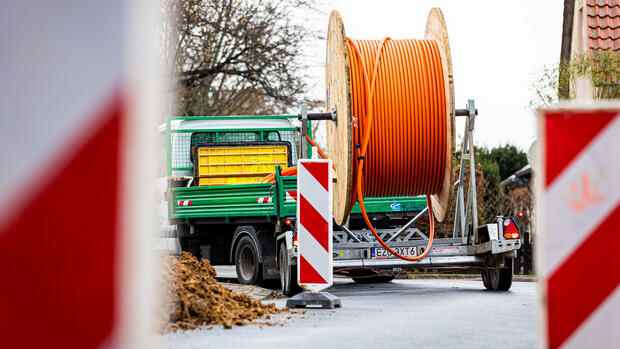Berlin Companies are expanding fiber optic networks in Germany faster than in previous years. This is the result of the latest market analysis by the Federal Association for Broadband Communication (Breko). “The industry is fulfilling its commitment: We are expanding at great speed,” said Norbert Westfal, President of Breko and head of the network operator EWETel.
According to this, 4.4 million connections were added last year, so that 12.7 million households are now able to be connected to the fiber optic network. According to Breko, the rate was now 26 percent after less than 20 percent last year (as of the end of June 2022).
Digital Minister Volker Wissing (FDP) is primarily relying on the private sector to advance the expansion. He is also relying on a slightly different subsidy program from the previous government in order to use tax money to support expansion where it does not pay off.
Top jobs of the day
Find the best jobs now and
be notified by email.
The industry, however, wants as little funding as possible in order to be able to continuously roll out and link its networks. From 2023, however, every municipality will be able to advertise projects – and if necessary, subsidize them from the state. The companies warn of a “subsidy tsunami” that could slow down the self-sufficient expansion in view of the already scarce construction capacities.
Industry points to record investments
Accordingly, Breko points out that the industry has invested almost 190 billion euros since 1998. In 2021, the state paid out subsidies of around one billion euros, which corresponds to nine percent of the total investments for the year. It is not yet clear what exactly will happen next. The Federal Digital Ministry is currently working on details of the new funding guideline. “The subsidy must complement the self-sufficient expansion and must not impede it under any circumstances,” said Breko President Westfal.
In 2021, the state paid out subsidies of around one billion euros.
(Photo: dpa)
According to Breko, the top dog, Deutsche Telekom, invested 4.5 billion euros in the broadband network last year. The competitors came up with 6.5 billion. However, it is questionable whether it will continue at this pace. As in other sectors, the uncertainties are now great. So there are delivery bottlenecks, there is a lack of skilled workers. The prices, for example for glass fiber, have also risen.
Nevertheless, Breko is confident that companies can continue to implement their investment plans and achieve the government’s goal. In 2021 there were “record investments” of eleven billion euros. Breko claims to represent 237 of the 270 alternative network operators.
The market prospects themselves are good. Fiber optic connections make it possible to download and upload data from the Internet at a speed of 1000 megabits per second. In contrast to connections from cable network operators, the performance remains constant – regardless of how many users are currently using the network.
Very few have a high-performance fiber optic connection
A particularly large amount of data flows via fixed network connections: while in 2020 it was still an average of 186 gigabytes per connection and month, the Breko is already expecting 455 gigabytes in 2023 and even 811 gigabytes in 2025.
As people increasingly use streaming and digital TV services, fixed-line connections with a data speed of 100 megabits per second or more predominate for the first time.
(Photo: dpa)
A fraction of the data flows in mobile communications: In 2021, at 4.3 gigabytes, it was only 1.68 percent compared to fixed network connections. This may change if one day there are 5G networks across the board. According to Breko, up to 800,000 base stations would have to be connected to the fiber optic network. Currently there are 16,500.
As people increasingly use streaming and digital TV services, fixed-line connections with a data speed of 100 megabits per second or more predominate for the first time. They make up the majority at 38 percent, followed by connections with 30 to 100 megabits per second (37 percent).
The number of users is falling there, as is the case with the even slower copper cable connections. On the other hand, very few use a fully efficient fiber optic connection: Only four percent have actually booked a connection with one gigabit or more per second, which corresponds to around 1.4 million customers.
According to Breko, the federal funding program, which has existed since 2015 and has been adjusted several times, has meanwhile paid out 22.5 percent of the promised funding.
In total, the federal government has made more than 12.85 billion euros available so far, of which it has approved applications worth 5.6 billion euros. Specifically, 2.4 billion euros flowed, with which 1.2 million Internet connections with at least 50 megabits per second were realized. The federal government only pays out the money once a project has been completed.
More: How Germany wants to protect its telecom networks
